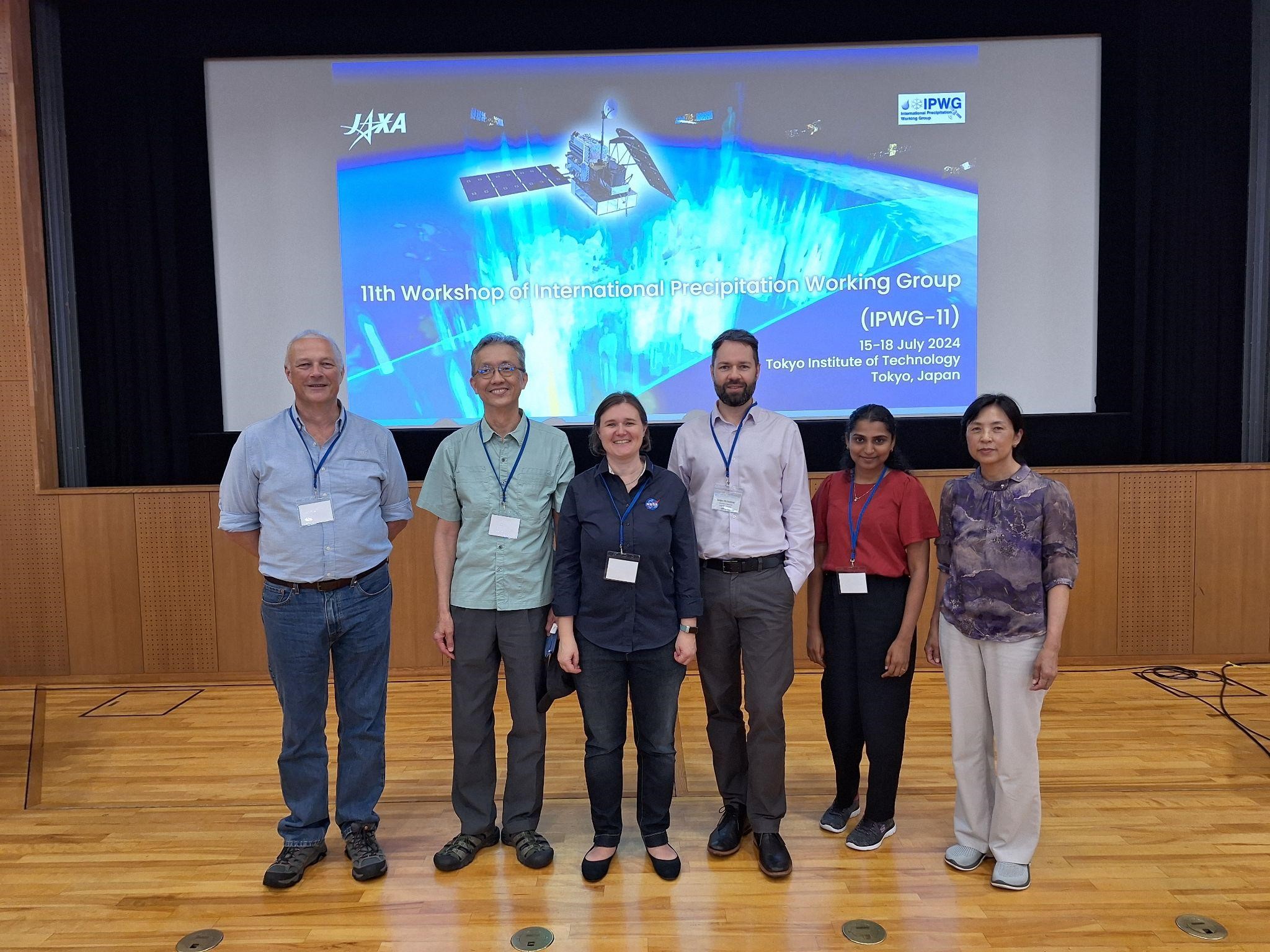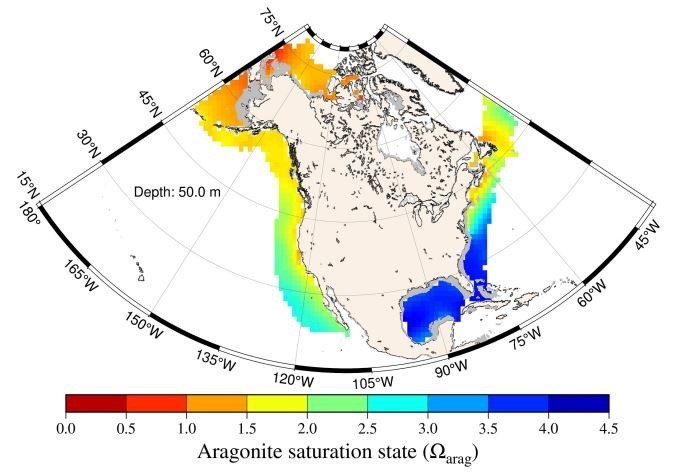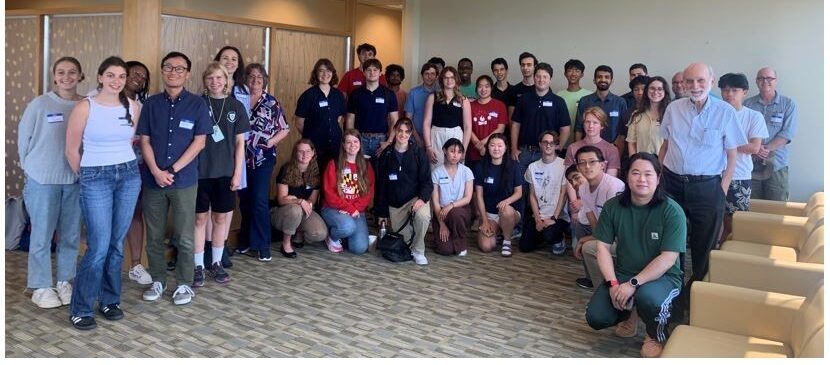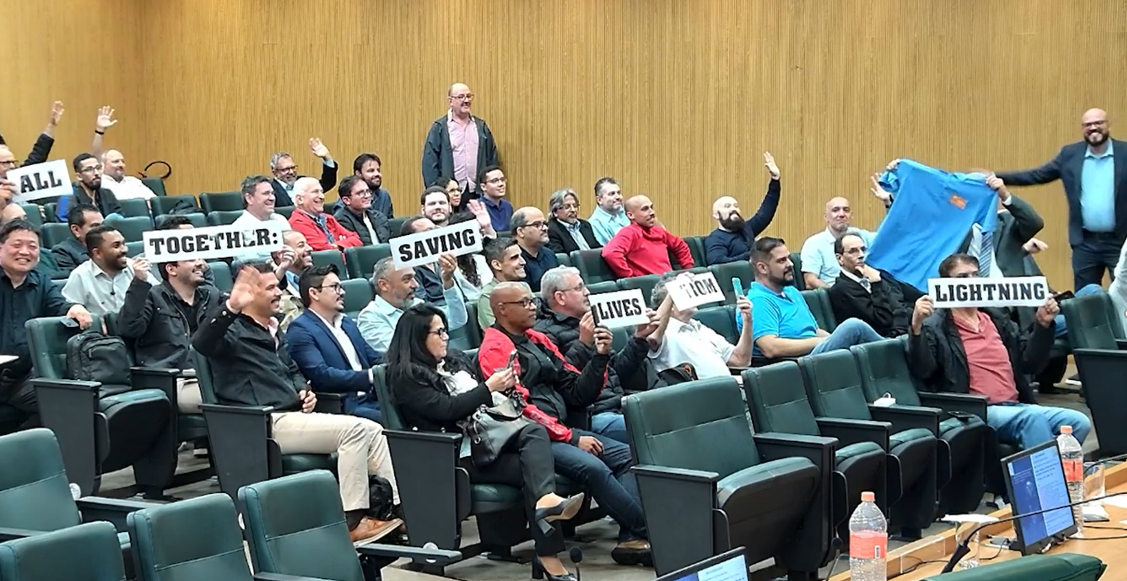
Measuring Greenhouse Gasses at Sea
Caption: Scientific crew on board of the Research Vessel (R/V) Point Sur. From left to right: Jonathan Gallegos (SciGlob), Ryan Stauffer (NASA Goddard), Anne Thompson

Caption: Scientific crew on board of the Research Vessel (R/V) Point Sur. From left to right: Jonathan Gallegos (SciGlob), Ryan Stauffer (NASA Goddard), Anne Thompson

Left to right: Chris Kidd, Kwo Sen-Kuo, Lisa Milani, Veljko Petkovic, Malarvizhi Arulraj, and Huan Meng Last month, several ESSIC scientists traveled to Tokyo, Japan

ESSIC scientist Jaehwa Lee has been awarded the Robert H. Goddard Award for Science in recognition of his significant contributions to aerosol research, specifically, his
![Figure. Example of a mapped data product: seasonal means of dissolved inorganic carbon [CT(RFR-LME)] in the Northern Hemisphere (a) winter (December-January-February), (b) spring (March-April-May), (c) summer (June-July-August), and (d) fall (September-October-November) over the period 1998–2022 within each U.S. LME.](https://essic.umd.edu/wp-content/uploads/2024/08/jiang-1.jpg)
(Click to enlarge) Comparisons between pCO2 from selected moored buoy observations, RFR-LME and RFR-LME-NM maps, and other mapped surface products. (a) Mapped long-term mean pCO2(RFR-LME)

Figure. Example of a map of one of the OA indicators, namely, the aragonite saturation state at a depth of 50 m on the North

Figure. Example of (left panel) radar outage frequency and (right panel) radar outage cost estimates for the year 2023. Weather radars are crucial tools for

The annual midsummer party for the summer internship programs was held on 17 July 2024 at the Earth System Science Interdisciplinary Center (ESSIC) Building in

ESSIC/CISESS scientist Daile Zhang took the lead and organized the 2024 International Lightning Safety Day (ILSD) Event on June 28, 2024. The ILSD event serves as an annual virtual platform dedicated to the discussion of lightning safety strategies, educational initiatives, technological advancements, methodologies, progress, and challenges from around the world. With participants from over 25 countries spanning North and South Americas, Africa, Asia, and Europe, this event aims to foster global collaboration in lightning safety.

ESSIC/CISESS scientist, Daile Zhang, held a live Reddit “Ask Me Anything” (AMA) event for the Lightning Safety Awareness Week on June 24, 2024. The event was hosted by the UMD’s College of Computer, Mathematical, and Natural Sciences.

ESSIC scientists Li-Qing Jiang, Paige Lavin, and Hyelim Yoo are a part of a team of scientists that have developed detailed maps that track ocean acidification indicators from 1998 to 2022 for eleven large marine ecosystems (LMEs) in the U.S. The study was just published in Nature – Scientific Data for this work.